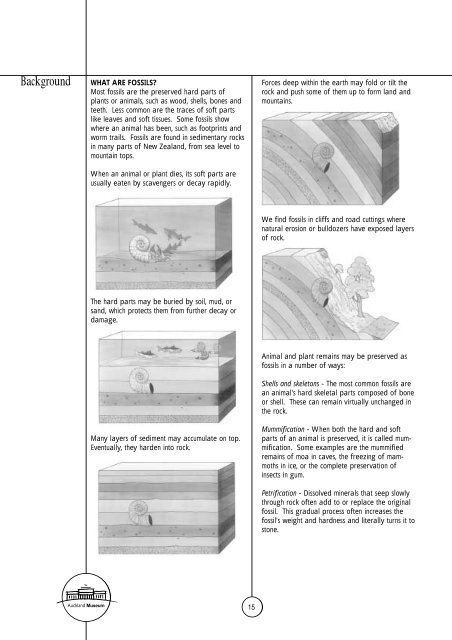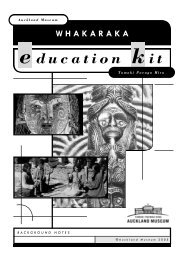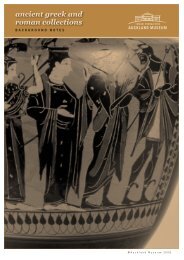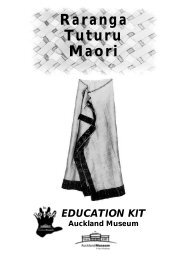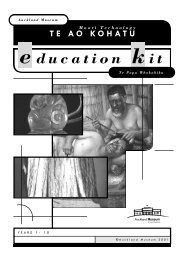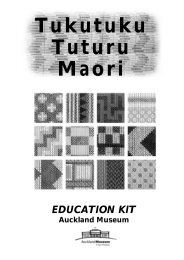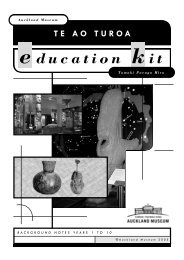Wanted: Oscar Obsidian - Auckland Museum
Wanted: Oscar Obsidian - Auckland Museum
Wanted: Oscar Obsidian - Auckland Museum
You also want an ePaper? Increase the reach of your titles
YUMPU automatically turns print PDFs into web optimized ePapers that Google loves.
Background<br />
WHAT ARE FOSSILS?<br />
Most fossils are the preserved hard parts of<br />
plants or animals, such as wood, shells, bones and<br />
teeth. Less common are the traces of soft parts<br />
like leaves and soft tissues. Some fossils show<br />
where an animal has been, such as footprints and<br />
worm trails. Fossils are found in sedimentary rocks<br />
in many parts of New Zealand, from sea level to<br />
mountain tops.<br />
When an animal or plant dies, its soft parts are<br />
usually eaten by scavengers or decay rapidly.<br />
The hard parts may be buried by soil, mud, or<br />
sand, which protects them from further decay or<br />
damage.<br />
Many layers of sediment may accumulate on top.<br />
Eventually, they harden into rock.<br />
<strong>Auckland</strong> <strong>Museum</strong> 15<br />
Forces deep within the earth may fold or tilt the<br />
rock and push some of them up to form land and<br />
mountains.<br />
We find fossils in cliffs and road cuttings where<br />
natural erosion or bulldozers have exposed layers<br />
of rock.<br />
Animal and plant remains may be preserved as<br />
fossils in a number of ways:<br />
Shells and skeletons - The most common fossils are<br />
an animal's hard skeletal parts composed of bone<br />
or shell. These can remain virtually unchanged in<br />
the rock.<br />
Mummification - When both the hard and soft<br />
parts of an animal is preserved, it is called mummification.<br />
Some examples are the mummified<br />
remains of moa in caves, the freezing of mammoths<br />
in ice, or the complete preservation of<br />
insects in gum.<br />
Petrification - Dissolved minerals that seep slowly<br />
through rock often add to or replace the original<br />
fossil. This gradual process often increases the<br />
fossil's weight and hardness and literally turns it to<br />
stone.


